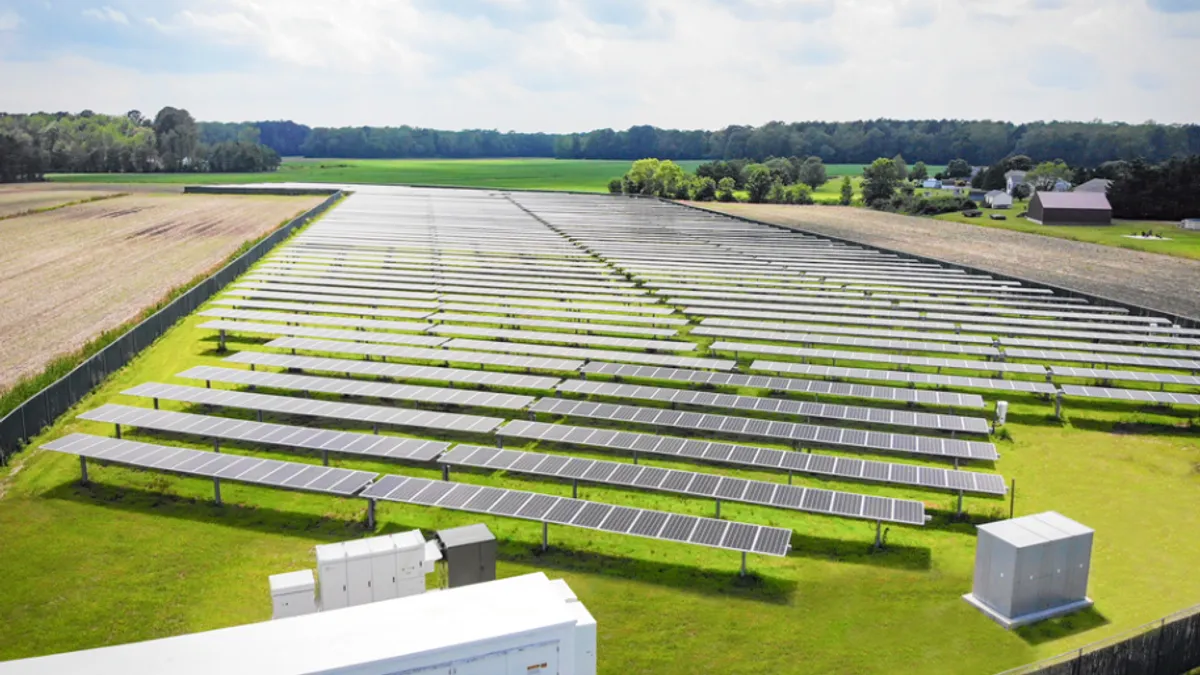Adding storage to your commercial on-site solar power asset is a numbers game. When you save on your overall electricity bill, you definitely come out ahead. Here are three reasons to add storage to your solar PV:
Reason #1: Use solar when you need it most (even if it’s cloudy)
Most utilities have time-based rates for commercial and industrial (C&I) customers, which means you pay more when the grid is delivering at its peak capacity. For summer-peaking utilities, that’s generally late afternoon.
With a storage system connected to your solar array, you can store some of your solar generation when rates are low and discharge the battery to lower your grid-supplied energy consumption when grid power costs rise. This is known as time shifting your energy usage, and it’s a great way to improve the ROI on your solar investments.

In the graph above, an industrial customer with higher electricity costs between 4:00 p.m. and 9:00 p.m. uses solar power to charge a battery storage system from 7:00 a.m. until noon. Later in the day, this same facility uses that stored power to extend use of its solar generation into those high-priced hours, thereby lowering power costs overall, as shown by the blue shape in the top right quadrant of the graphic.
Reason #2: Supersize your solar
If you’re a utility with a large solar installation and no associated storage, you have a constraint: You can only generate as much solar power as the transmission lines and grid interconnection you’re using can accommodate.
The same is true for a business with solar power installed. You can only have as much solar as you’re able to use at your own peak consumption level. Again, you have a constraint, and it may mean you’re stuck using grid power for part of the day when you’d rather be relying on your own clean, lower-cost, energy.

With storage, you can bank additional generation that would exceed your constraint, giving you the chance to install a bigger solar array and gain more value from your solar investment.
Reason #3: Manage outages and grid interruptions
Electricity can move at nearly the speed of light, which means that without storage, it is used in the same instant it’s generated. Consequently, energy generation and energy usage must be in balance. When it’s not, the imbalance causes dips and spikes in voltage, which can damage many machines used in industrial processes.
Even a passing cloud that impedes solar generation can be problematic. Generation capacity drops. If your consumption doesn’t, it can impact facility voltage.
A combined solar and storage installation can adjust for any dips in generation that weather creates. The process of managing those small deviations in generation capacity that passing clouds create is called “solar smoothing.”
Storage can also allow you to disconnect your facility from the grid and keep your equipment running for a pre-determined time period.

If you need power during later hours of the day when solar generation decreases, you can benefit from adding a battery storage system to your solar PV. This is “energy firming,” the process of maintaining the output from your solar installation for a required length of time. Put another way, it is making sure enough energy is always available when you need it. For all these reasons, solar and storage are better together.
To find out how much your business can save with a customized solar + storage solution, schedule a free, no-obligation introductory call with the experts at Convergent Energy + Power today. Convergent has over a decade of experience financing, developing, and operating energy storage systems that deliver significant savings while increasing reliability and sustainability.
Learn more about Convergent and their commitment to building an energy landscape that is less expensive, more reliable, and increasingly sustainable.










